Photographs: Courtesy, PIB.
The Budget is commendable, as without making any major tax changes it has targeted a 4.6 per cent fiscal deficit for 2011-12 by focusing on achieving 9 per cent growth.
The net borrowing target of Rs 343,000 crore, lower than what the market expected will help in moderating the pressure on interest rates, which is good for the industry and the equity market. By not increasing the excise duty the Finance Minister has ensured the current growth trajectory is not disturbed and that collection targets are met from higher volumes. The cash based transfer mechanism for subsidies is a very positive step. Increasing the limit of FII investment in corporate bonds and infrastructure bonds are steps in the right direction to improve liquidity in the market and make funds available to the corporate sector. Allowing the Indian equity mutual funds to source funds from foreign investors is good for the growth of the Indian mutual fund industry and will also result in higher flow of foreign funds into equity markets over a period of time. Stand alone while the budget is positive for the equity markets, other factors like the crude oil price and the global scenario will largely decide the direction of the market in the medium term.. . .
Budget positive for the automobile sector
Image: Budget positive for auto sector.Automobile: Overall, the Union Budget 2011-12 is positive for the automobile sector as the central excise duty has been kept unchanged.
Further, special incentives has been announced for companies manufacturing hybrid vehicles in India. Moreover, broader measures like increased focus on rural and infrastructure spending would support long term growth of the sector.Information Technology: The Union Budget 2011-12 was a low key affair for the Software Sector.
The Budget did not mention extension of fiscal benefits under the STPI Scheme for Export of Software Services, which is due to expire in FY2011. Plan allocation for school education increased by 24% to Rs 52,057 crore in FY2011-12. This would boost business opportunities for the IT-Education companies in terms of ICT andPPP in K-12 and Vocational Segments. viz. Educomp, Everonn and NIIT Ltd. Overall, the budget was Neutral for IT sector.. . .
'Fiscal deficit may exceed the budget estimates'
Image: Fiscal deficit may exceed the budget estimates.Naresh Takkar, Managing Director, ICRA Ltd
Some positive aspects of the Budget for 2011-12 include a reiteration of government's commitments to implement GST and DTC as per the time schedules announced earlier, as well as a move towards better delivery of subsidies to prevent leakages.
Another significant positive is targeting a better-than-expected budget estimate for the fiscal deficit for 2011-12. However the targeted improvement in the deficit is based on a forecast 18 per cent growth of net tax revenues following a rather positive assumption of a 9% economic growth for 2011-12. Moreover, the allocation for the three major categories of subsidies, namely food, fuel and fertiliser, is lower than the revised estimates for 2010-11. In particular, the outlay for fuel subsidies is likely to prove inadequate in the absence of a significant increase in the prices of regulated petroleum products, given that crude oil prices may remain elevated over the near term. The outlay for food subsidies too is expected to be larger than the budgetary allocation, given the impending introduction of the National Food Security Bill, unless considerable improvement in targeting of food subsidies is made during the course of the year. Accordingly, we expect that the actual fiscal deficit may exceed the budget estimates for 2011-12.The availability of surplus cash following the substantial inflows from the telecom auctions in 2010-11 has aided GoI in placing the net long term government borrowings at Rs. 3.43 lakh crore in 2011-12, moderately higher than the level in 2010-11.
With the gross borrowings expected to be curtailed below the level of the borrowings undertaken by GoI in 2010-11, based on the budgeted level of the fiscal deficit, bond yields are likely to ease in the coming months and then increase subsequently if the fiscal deficit targets are not met.The corporate sector as a whole is expected to benefit from the status quo on excise duty rates and possibility of interest rates remaining under control, given the lower-than-expected net borrowing figure and the reduction in surcharge on corporate taxes.
The decision to allow foreign investments in the local Mutual Fund Industry would help deepen the resource base for the capital markets.. . .
Budget offers more funds for infrastructure
Image: Budget to focus on infrastructure.Further, steps like tax free infra bonds worth `30,000cr by various government undertakings, creation of infra debt funds are positive for the sector.
Also, MAT rate has been hike from 18% to 18.5% which would nullify the benefit from surcharge reduction from 7.5% to 5%.
The tax benefit under Section 80IA and 20,000 investment in Infrastructure Bonds has been extended by one year.
Metals & Mining: Export duty on export of iron ore has been raised to ad valorem20% on lumps as well as fines.
Currently, lumps are taxed at 15% and fines are taxed at 5%. This is negative news for iron ore exporters such as Sesa Goa( 90% of total sales from exports) and NMDC ( 15% of total sales from iron ore exports).
Nevertheless, no imposition of mining tax (26% at PBT) is a positive for mining companies as well as steel companies with captive mines.
. . .
Budget neutral for the pharmaceutical sector
Image: No benefit for pharma.. . .
Positive signal to capital goods sector
Image: BHEL.Capital Goods: The Budget 2011-12, though it did not have many significant direct measures for the Capital Goods sector, it sent a positive signal with regards to the continued impetus being provided to the Infrastructure and Power Sector of the country.
As regards the specific demand by BHEL and L&T to increase import duty on foreign equipment, which cited the lack of a level playing field for domestic manufacturers, the Finance Minister has ignored the same and kept the rates unchanged. However, parallel excise duty exemption for domestic suppliers producing capital goods needed for expansion of existing mega or ultra mega power projects have been granted.. . .
'This budget has been quite neutral'
Image: New policies.Satish Menon, Director, Operations, Geojit BNP Paribas Financial Services
This budget has been quite neutral, without much surprises, the FM has proposed to contain the deficit at 4.6% of the GDP and have a growth of 9 % for the next year.
There have been announcement of various new policies to be implemented throughout the year, namely, DTC, GST, Insurance bill, banking license clarity, cash subsidies for kerosene and fertilizers etc.
This shows that the whole budget exercise is to primarily look at the macro figures and then await the implementation of the various policies throughout the year.
'It is a reform oriented Budget '
Image: Budget for reforms.Pawan Goenka, President, SIAM
S Sandilya, Vice President, SIAM
Pawan Goenka, President, SIAM welcomed the Union Budget 2011-12, terming it as a "Reform Oriented Budget".
Finance Minister has talked about several reform initiatives including roadmap for Direct Taxes Code, Constitutional Amendment Bill for Goods & Services Tax (GST) which would be tabled in the current session of the Parliament and also, pilot project across11 states for implementation of IT towards GST introduction. The amendments related to the Finance Sector will help in streamlining operations and boosting the economy.S Sandilya, Vice President, SIAM added that the increase in flow of money to the rural areas from Rs 3,75,000 crore to Rs 4,75,000 crore would lead to demand creation in rural areas.
However, this may also lead to increase in food inflation which one needs to keep a watch on. He added that the FM has also initiated a lot of course corrections, for instance, direct subsidy to Kerosene customers, which would remove a lot of malpractices from the system.
Increase in investment in rural warehousing and encouragement for cold storage facilities is also a welcome move. He also welcomed increased allocation to the National Clean Energy Fund and National Skills Development Fund.
Goenka remarked that FM has given a clear message to the industry by announcing setting up of National Mission for Hybrid and Electric Hybrid vehicles.
He thanked the Department of Heavy Industry for taking it up on behalf of the industry. He also talked about several fiscal measures for promoting such vehicles including introduction of 10% excise duty for Fuel cell and Hydrogen vehicles, exemption to specified parts from Basic Customs Duty and CVD along with 5% excise duty, etc. which would provide a significant incentive to promote the development, manufacturing and sale of such vehicles in India.
Finance Minister has also removed certain anomalies in the excise duty structure, which SIAM has been requesting for removal, like Taxi Refund extended to vehicles with seating capacity up to 13 persons and exemption to factory-built ambulances from additional excise duty.
Dr Goenka also welcomed that the FM has accepted our request of not rolling back the economic stimulus package and maintaining the Central CENVAT rate. The industry, however, was expecting some rationalization of excise duty on larger cars and utility vehicles, atleast removal of additional excise duty of Rs 15,000 from such vehicles, which was not announced.
He hoped that the implementation of all the measures announced in the Union Budget today would fuel growth of overall economic activity and have a positive impact on the automotive industry.
. . .
'Reduction in fiscal deficit should be achievable'
Image: Focus on priority sectors.Dinesh Thakkar, CMD, Angel Broking
"In the Union Budget 2011-12, constraint is what was required on the expenditure side and by not having any major populist measures, the FM has managed to bring down the targeted Fiscal Deficit to 4.6%, which should be achievable provided fuel prices are hiked.
Rightly focusing on pressing matters, measures to tackle high food inflation include viability gap funding will be provided for cold storage chains and increase in priority sector lending targets from Rs3.8 to 4.8lakh cr.
Also, given the shortage of funds in the domestic banking sector, several measures are included to increase fund availability from other sources, pertinently FII investments in corporate bonds being increased to US$40bn, withholding tax reduced, Tax-free bond limits increased, etc.
Together with new bank licenses and increased foreign bank participation over the course of next year, the gap between savings and investments should get narrowed, keeping interest rates also in check a positive for banks, infrastructure and the overall economy. On governance, there seems to be a firm commitment to plug leakages (direct transfer of cash subsidy), reduce black money, tackle corruption, monitor performance of ministries as well as continue fiscal consolidation.
Without over-stretching itself, this Budget includes a decent set of measures without compromising on its fiscal deficit position and considering this, I would assign the Budget a rating of 7 out of 10."
. . .
'Budget, a great job'
Image: Government borrowing must be curbed.Maintaining government borrowing at Rs 3.4 lakh crore is a big relief, and achieving it despite not touching excise rates is a great job".
"Has invited foreign capital for funding India's growth, through Foreign Capital for infrastructure and corporate bonds"
"Has spelled reforms in FDI in Insurance, banking, infrastructure, despite not being very explicit about it, probably deliberately."




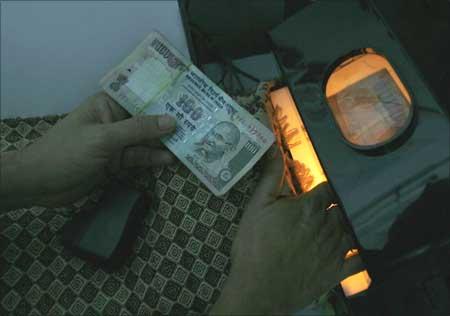
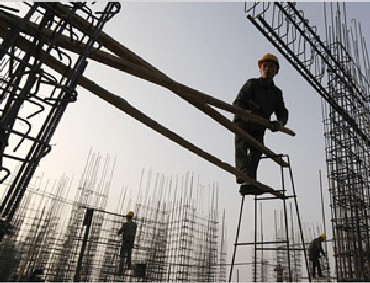
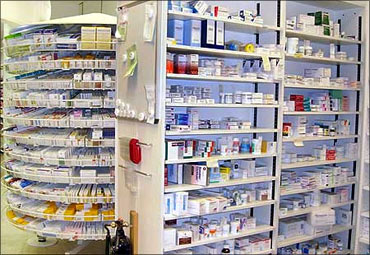
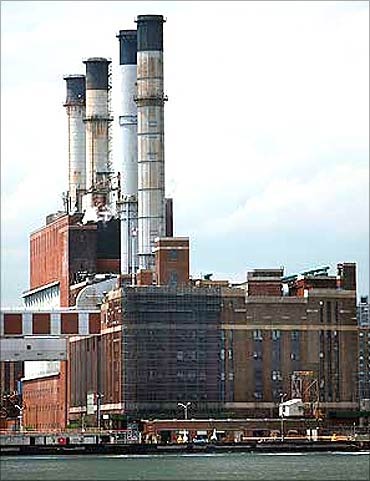
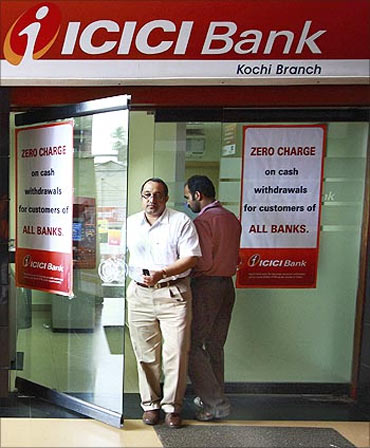

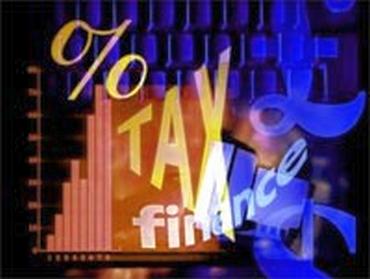

article